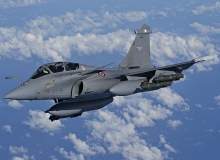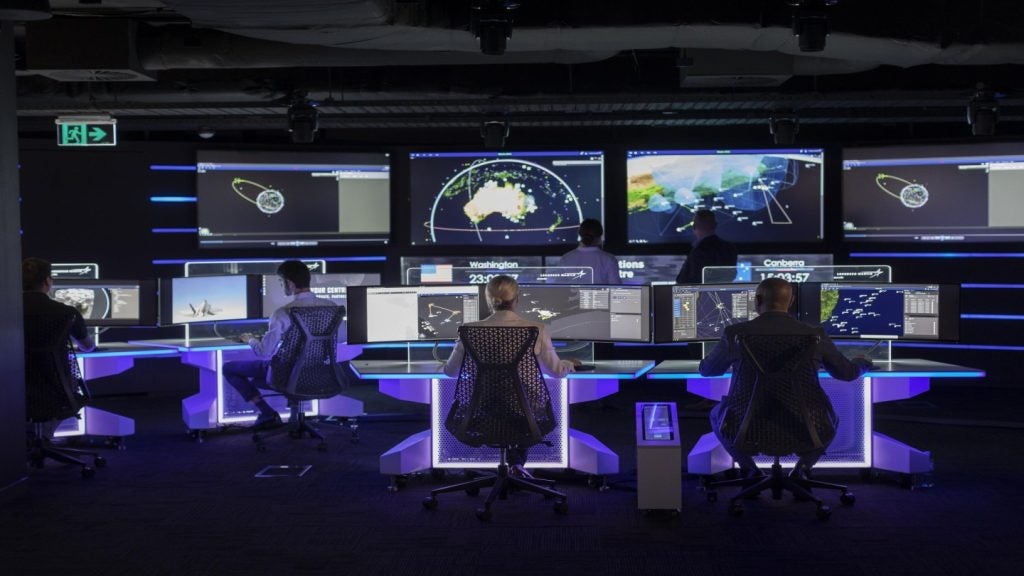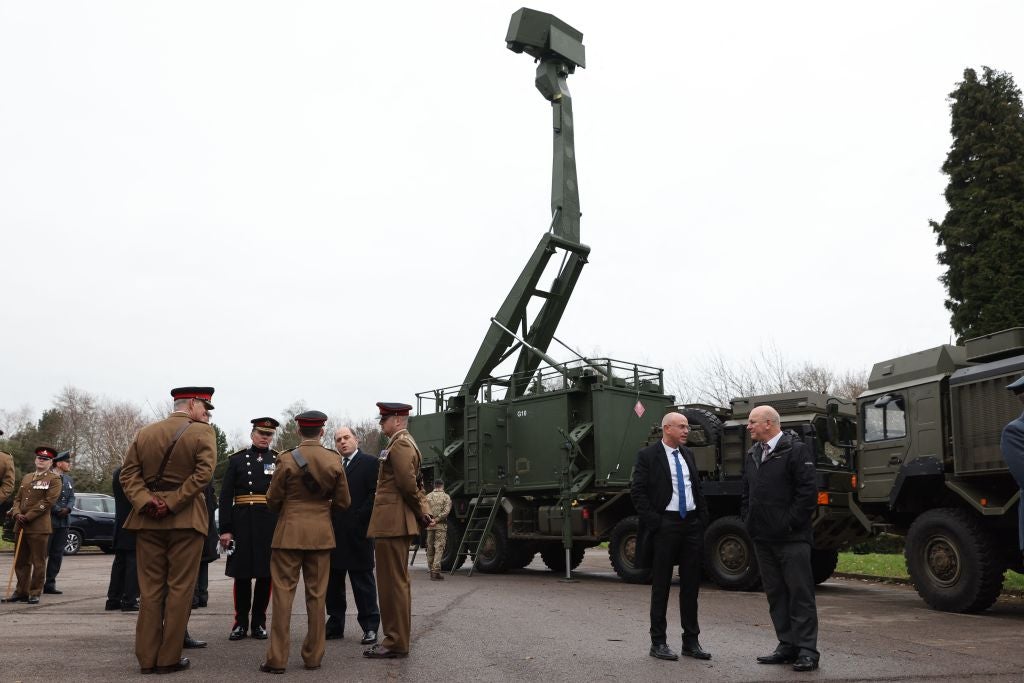
Modern conflicts, particularly those centred around an urban environment, often involve enemy targets situated close to friendly forces, centres of civilian population or essential infrastructure, meaning traditional air strikes carry a high risk of collateral damage.
These situations call for close air support (CAS), defined as action conducted from aircraft using precise weaponry and targeting systems after detailed and often lengthy surveillance, often employing lower explosive power.
The recent wars in Iraq and Afghanistan were for the most part carried out on a two-tier basis, with ground troops brought in to track down insurgents living among civilians and air strikes used against compounds and bomb factories remote from built-up areas.
The uprising in Libya prompted the United Nations (UN) to offer support to the Libyan rebels initially through an arms embargo and then through resolution 1973, which demanded the immediate establishment of a ceasefire and a complete end to violence and all attacks against, as well as abuses of, Libyan civilians.
Crucially, it imposed a no-fly zone, authorising the use of "all necessary means" to protect civilians and civilian-populated areas except a "foreign occupying force", effectively ruling out the deployment of ground troops.
See Also:
Wing Commander Martin Tinworth, a spokesman for the RAF, says the wording of the resolutions forced Nato’s hand to launch a CAS-driven mission.
How well do you really know your competitors?
Access the most comprehensive Company Profiles on the market, powered by GlobalData. Save hours of research. Gain competitive edge.

Thank you!
Your download email will arrive shortly
Not ready to buy yet? Download a free sample
We are confident about the unique quality of our Company Profiles. However, we want you to make the most beneficial decision for your business, so we offer a free sample that you can download by submitting the below form
By GlobalData"UN Security Council Resolution 1973 (UNSCR1973) was designed to protect the Libyan people and prevent a massacre," said Tinworth.
"The reasons behind the course of action being mainly air focussed are multiple and complex, with the UNSCR and the politics not allowing Nato ‘boots on the ground’. Thus the move towards air, and to some extent sea, intervention."
According to Tinworth, air power is the ideal choice for certain conflicts as it offers the ability to deal with the unexpected, and to react quickly and act globally, with air and space-based Intelligence, Surveillance and Reconnaissance (ISR) enabling strategic choices to be made. Air power can also be swung rapidly back again, preserving political options and to better avoid entanglements.
Contrasts with Kosovo
Prior to Libya, Nato’s most recent comparable action was the 1999 air war in Kosovo, launched to bring an end to Serbian leader Slobodan Milosevic’s campaign of genocide against Kosovo’s Albanian population. In Libya, coalition forces wanted to bring about maximum effectiveness with minimal firepower to free civilians from Colonel Gadaffi’s oppressive regime at the earliest opportunity.
Developments in technology since Kosovo helped achieve this. In the mission to protect civilians, Nato launched just 50 precision attacks daily in Libya at the peak of fighting, contrasting with 1,000 a night in Kosovo.
Speaking at the International Fighter Conference 2011 held earlier in 2011 in London, Air Vice-Marshal Stuart Atha, the Air Officer Commanding the RAF’s Number One group, said with Nato unwilling to commit ground forces in Libya, finding a way to maintain the same effect from the air was crucial.
However, at three times the area of Iraq and twice the length of the UK, the size of Libya added an additional challenge, with even the fastest jet taking 40 minutes to travel between Tripoli and Benghazi.
Atha added that although the US stepped back to allow European allies to run operations in Libya, US forces continued to provide the majority of air support operations, including air-to-air refuelling and surveillance by predator drones.
Critical to the success of the mission, the Eurofighter Typhoon came of age during the conflict, silencing lingering criticism with its precision missile strikes. It flew for 4,200 hours during the conflict.
Accurate targeting
At the same conference, Brigadier-General Silvano ‘Fritz’ Fregerio, deputy chief of air and space plans divisions of the Italian Air Force, went on to add more detail about the precision strikes in Libya.
With Gadaffi fielding 3,000 armed vehicles and 80,000 troops, Nato was hard-tasked to help turn the tide of the conflict while reducing collateral damage in support of the UN’s resolutions to protect civilians.
He outlined the factors that affect targeting, pointing out that pilot skill remained as important as targeting technologies in ensuring the targets were hit while avoiding damage to the nearest collateral concern (NCC), such as a nearby school or Mosque.
He said targets could be divided into deliberate, which are known to exist in the target area, and dynamic, which are discovered too late to plan ahead and depend on pilot skill.
Fregerio concluded with the lessons Nato should learn from Libya, which include that excellent weapons systems were used, but they were too varied to manage effectively in an era of financial constraints.
By contrast, low cost platforms could still play an effective role when loaded with the latest technology, at a far lower cost than introducing new fighter jets.
He added that the desired effect could be produced using weapons with less power which produce a smaller, more precise blast area when used alongside ISTAR and C4 assets to support targeting and surveillance operations.
Budget constraints
Also at International Fighter 2011, Colonel Edward ‘Yard’ Corcoran spoke on the US Air Command perspective of how to balance air supremacy requirements with the needs of current asymmetric requirements in the light of current budget constraints.
Corcoran set out the different mix of marine, land, air, cyber and space assets required by different conflict scenarios across the operational spectrum. These would need to be maintained in the light of the future challenges in an era of ongoing rapid change and fiscal constraints, he said.
To achieve this, equipment for CAS campaigns would need to be balanced, with a mix of 4th and 5th generation fighters and manned and unmanned aircraft, though capability gaps in counter-air assets could pose challenges in securing the air domain.
"A balanced approach requires a decreasing level of commitment and equipment consumed to remain effective in the face of the inevitable decline in funding," he said.
The Libyan conflict was a model for this approach, with mixed assets working in harmony and relatively few missiles fired but targeted precisely to key targets.
Local bases versus aircraft carriers
The success of the Kosovan and Libyan air campaigns depended on having air bases close to the theatre, enabling rapid and responsive action using the latest intelligence.
In the case of Libya, the Sigonella Air Base in Sicily was used, just a short hop across the sea.
Future conflicts may not be so close to allied bases, however, meaning similar CAS action may need to be launched from aircraft carriers.
Defence cuts have left Nato allies with limited resources, with many ageing carriers being taken out of service and the delivery of replacements delayed, subject to design changes or planned to be mothballed immediately on completion.
Given the effectiveness of the Libyan campaign and its urgency to stop the suffering of civilians, Nato should ignore at its peril the pressing need to rapidly deploy CAS from the sea for future missions further afield.
Solutions may include the fitting of landing and launch gear that will enable carriers to be shared by allied forces.






